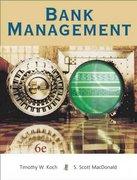

Q8
CASE #4 - PHANTOM FUND (15 marks in total) The following information relates to Questions 8.1-8.5 Phantom Fund, a UK-based globally diversified equity mutual fund, is considering adding Solar Energy Inc. to its portfolio. Solar is an independent upstream oil and gas company headquartered in Calgary, Canada. It is one of the largest oil and gas companies in Canada and has operations in several countries. Alex Capulong, an analyst at the mutual fund, has been assigned the task of estimating a fair value of Solar. Capulong is aware of several approaches that could be used for this purpose. After carefully considering the characteristics of the company and its competitors, he believes the company will have extraordinary growth for the next few years and normal growth thereafter. So, he has concluded that a two-stage DDM is the most appropriate for valuing the stock. Solar pays semi-annual dividends. The total dividends during 2006, 2007, and 2008 have been C$0.114, C$0.15, and C$0.175, respectively. These imply a growth rate of 32 percent in 2007 and 17 percent in 2008. Capulong believes that the growth rate will be 14 percent in the next year. He has estimated that the first stage will include the next eight years. Capulong is using the CAPM to estimate the required return on equity for Solar. He has estimated that the beta of Solar, as measured against the S&P/TSX Composite Index (formerly TSE 300 Composite Index), is 0.84. The Canadian risk-free rate, as measured by the annual yield on the 10-year government bond, is 4.1 percent. The equity risk premium for the Canadian market is estimated at 5.5 percent. Based on these data, Capulong has estimated that the required return on Solar stock is 0.041 + 0.84(0.055) = 0.0872 or 8.72 percent. Capulong is doing the analysis in January 2009 and the stock price at that time is C$17. Capulong realizes that even within the two-stage DDM, there could be some variations in the approach. He would like to explore how these variations affect the valuation of the stock. Specifically, he wants to estimate the value of the stock for each of the following approaches separately. I. The dividend growth rate is expected to be 14% in the first stage of 8 years, followed by 7% growth rate thereafter. II. Unlike the first approach, in which 7% is used as second stage growth rate, Capulong wants to use his estimate that eight years later Solar's stock will be worth 17 times its earnings per share (trailing P/E of 17). Earnings retention ratio is expected to be 0.70. III. Unlike the first approach, the growth rate would decline linearly from 14 percent in the first year to 7 percent in the ninth year, rather than abruptly dropping in the ninth year.Question 8.1 (3 marks) What is the terminal value of the stock based on the first approach? A. C$17.65. B. C$31.06. C. C$33.09. Question 8.2 (3 marks) In the first approach, what proportion of the total value of the stock is represented by the value of second stage? A. 0.10. B. 0.52. C. 0.90. Question 8.3 (3 marks) What is the terminal value of the stock based on the second approach (earnings multiple)? A. C$12.12. B. C$28.29. C. C$33.09. Question 8.4 (3 marks) What is the current value of the stock based on the second approach? A. C$16.24. B. C$17.65. C. C$28.29. Question 8.5 (3 marks) Based on the third approach (the H-model), the stock is: A. undervalued. B. fairly valued. C. overvalued










